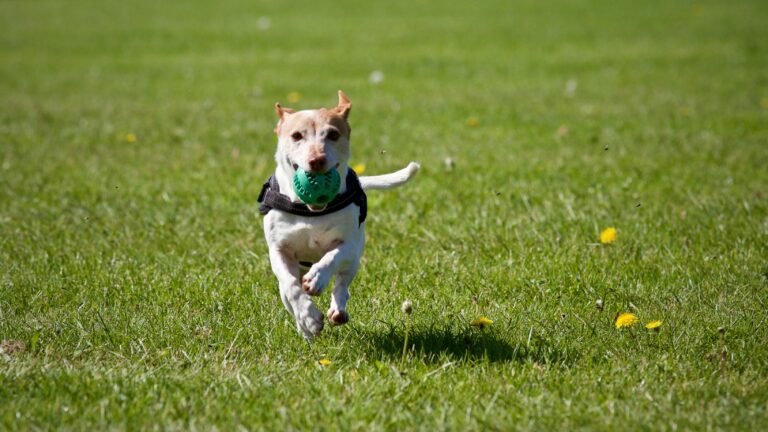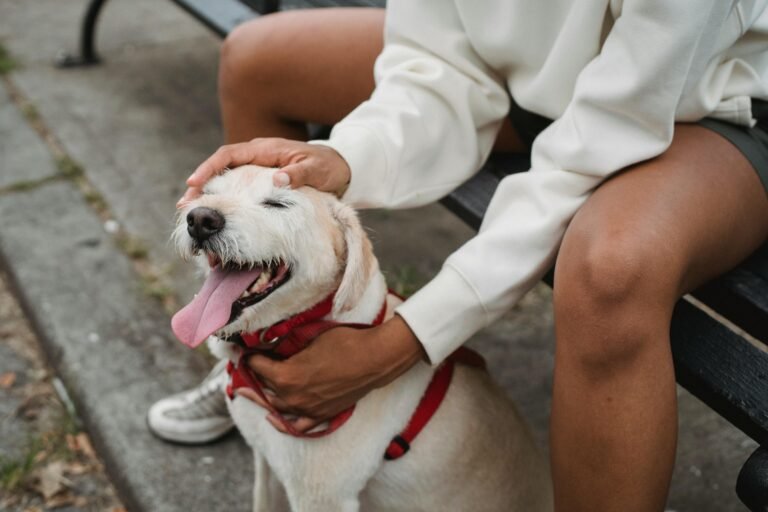Introduction
Between long workdays, social commitments, and family life, it’s easy to feel like there aren’t enough hours in the day—especially when you’re trying to be a great dog parent too. But building a balanced, dog-friendly routine doesn’t mean adding stress to your schedule. With a little structure and intentional planning, you can create a daily rhythm that keeps your pup happy, healthy, and emotionally fulfilled, even when life gets busy.
Why Routines Matter for Dogs
Dogs thrive on predictability. A consistent routine helps them feel secure and reduces anxiety. When they know what to expect—meal times, walks, and downtime—they relax and behave better. Routines also make your life easier, because a well-adjusted dog is calmer, more confident, and easier to train.
Whether you’re working from home, commuting, or managing a packed calendar, your dog can adapt as long as their day follows a steady rhythm of exercise, mental stimulation, and connection.
Step 1: Structure the Day Around Core Needs
All dogs need four essential things every day: movement, food, rest, and affection. Build your routine around these core elements:
Morning: Set the Tone
- Start with a short walk or potty break as soon as you wake up—this helps your dog release energy and start the day calm.
- Follow with breakfast and a few minutes of positive interaction—gentle play, brushing, or a simple trick session.
- Before leaving for work, give your dog a special toy (like a stuffed Kong or puzzle feeder) to make departures less stressful.
This calm, predictable start teaches your dog that mornings are structured and safe—no frantic rush, no confusion.
Midday: Mental Stimulation and Breaks
If you’re gone during the day, try to schedule a quick visit or walk mid-shift. Dog walkers, neighbors, or daycare can help. For home workers, plan a short mental break every few hours to check in with your dog—it’s good for both of you!
- Use puzzle toys or treat-dispensing balls to keep your dog busy while you’re away.
- Rotate toys weekly to keep things fresh and interesting.
- Play soft background music or white noise for company if your dog dislikes silence.
Evening: Reconnect and Recharge
Evenings are prime bonding time. Dogs love routines where they can count on you being fully present after work. Try this flow:
- Take a longer walk or play session to burn energy and de-stress from the day.
- Serve dinner at consistent times to regulate digestion.
- Spend 10–15 minutes on gentle training or relaxation exercises (like “place” or “settle”).
- Wind down with cuddle time or a quiet chew before bed.
Consistency builds trust. When your dog can anticipate your return and evening attention, they’re calmer throughout the day.
Step 2: Adapt the Routine to Your Schedule
Every lifestyle is different—so don’t aim for perfection, aim for balance. Here’s how to adjust based on your work style:
If You Work From Home
- Set “office hours” so your dog knows when you’re focused and when playtime happens.
- Schedule structured breaks—stretch, step outside, and let your dog sniff around for 10 minutes.
- Use enrichment toys or quiet mats during calls to keep them occupied.
If You Commute to Work
- Plan a morning walk long enough to tire your dog before you leave.
- Hire a midday dog walker or enroll your pup in part-time daycare.
- Keep your return calm—avoid dramatic greetings to prevent separation anxiety.
If You Work Irregular Hours
- Focus on consistency within your own schedule—your “morning” might be 2 PM, and that’s okay.
- Ask family members or neighbors for support during long shifts.
- Prioritize small, high-quality interactions when you’re home—short games, belly rubs, and training go a long way.
Step 3: Make Enrichment Part of the Routine
Mental exercise is just as important as physical activity. Enrichment keeps your dog’s brain sharp and reduces boredom-based behaviors like chewing or barking.
- Use feeding puzzles or snuffle mats for meals.
- Rotate training cues and add new tricks every month.
- Hide treats around the house for scent games.
- Offer safe chewing outlets—bones, dental sticks, or frozen toys.
Even 10 minutes of mental stimulation can satisfy your dog’s mind more than a long walk in poor weather.
Step 4: Create Consistent Rest and Relaxation Time
Downtime is crucial—dogs need 12–14 hours of rest per day. Build quiet moments into your schedule, especially after meals or play. A designated nap space—like a comfy bed in a peaceful corner—helps your dog associate that area with calmness.
Match your energy to theirs—when you unwind at night, encourage them to settle beside you. Consistent relaxation teaches dogs how to self-soothe and prevents overstimulation.
Step 5: Stay Flexible and Kind to Yourself
Routines aren’t rigid—they’re rhythm. Some days you’ll have time for long walks; others, you’ll be lucky to squeeze in a quick backyard session. That’s okay. What matters most is emotional consistency: your dog should always feel secure in your love and attention, even when time is tight.
Try to maintain small daily anchors—like morning greetings, meal times, or a few minutes of connection before bed. Dogs don’t need a perfect schedule—they need predictability and patience.
Tools and Tips for Busy Owners
- Automation helps: Smart feeders, treat cameras, and scheduled reminders can ease your load.
- Batch prep: Cook or portion out meals and treats ahead of time for smoother mornings.
- Combine routines: Stretch or meditate while your dog chews a bone nearby.
- Use commute time: Plan routes that include dog-friendly stops for short walks.
Sample Routine Template
Here’s a simple example of a balanced daily routine for busy owners:
- 7:00 AM: Morning potty + short walk
- 7:30 AM: Breakfast + enrichment toy
- 12:00 PM: Midday potty break or quick walk
- 6:00 PM: Longer walk + play session
- 7:00 PM: Dinner + quiet downtime
- 9:00 PM: Light grooming, cuddles, or training
- 10:00 PM: Final potty and bedtime
Adjust as needed for your lifestyle—the key is consistency and presence.
Conclusion
Being a busy dog owner doesn’t mean your pup has to miss out on love or structure. By building small but meaningful habits—morning walks, mental games, shared downtime—you can create a rhythm that fits both your worlds. Your dog doesn’t need perfection; they just need you to show up with intention, every day. A steady routine not only keeps your dog balanced—it brings calm and joy back into your own life too.






